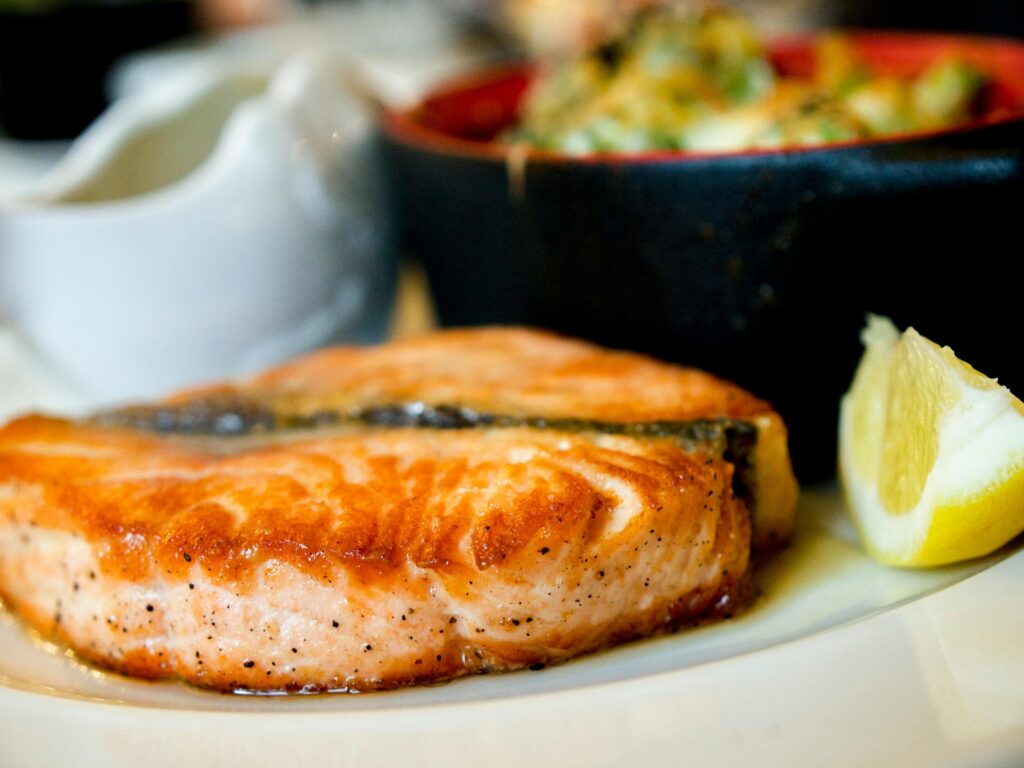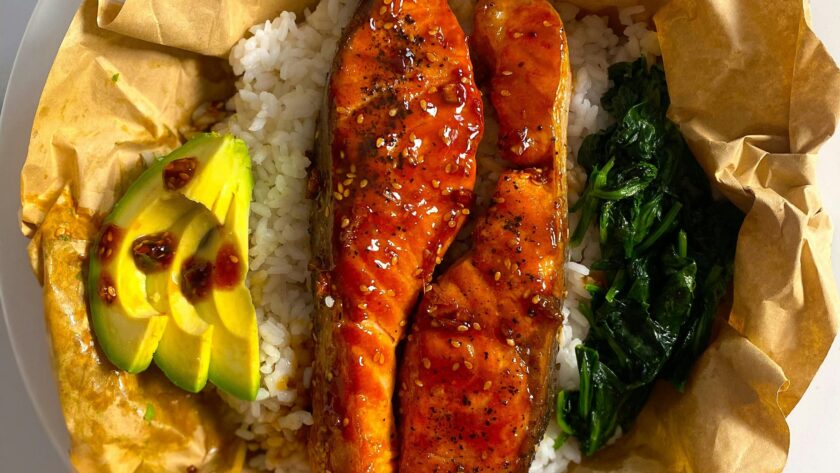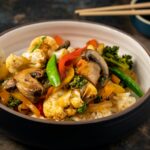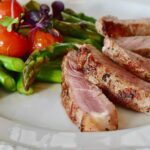When it comes to wholesome, flavorful meals, baked salmon stands out as a favorite. Whether you’re hosting a dinner party or preparing a quick weeknight meal, this recipe ensures success every time. Packed with omega-3 fatty acids, high-quality protein, and essential vitamins, salmon is not just delicious but also incredibly nutritious. Let’s dive into this ultimate baked salmon recipe, optimized for flavor, health, and ease.
Why Baked Salmon?
Baking salmon is one of the healthiest ways to cook this fish. Unlike frying, which can add unnecessary fats, baking preserves the natural flavors and nutrients of the salmon. Plus, it’s a hassle-free method that requires minimal cleanup. With a few fresh ingredients and proper techniques, you can create a dish that’s not only mouthwatering but also perfect for any diet plan.
Ingredients for Baked Salmon Recipe
Before we start, here’s a breakdown of the ingredients and their respective calorie counts:
| Ingredient | Quantity | Calories |
|---|---|---|
| Salmon fillets | 4 pieces (6 oz each) | 760 (190 per fillet) |
| Olive oil | 2 tbsp | 240 |
| Lemon juice | 2 tbsp | 8 |
| Garlic (minced) | 3 cloves | 13 |
| Fresh dill | 2 tbsp | 4 |
| Paprika | 1 tsp | 6 |
| Salt | To taste | 0 |
| Black pepper | To taste | 0 |
| Honey (optional) | 1 tsp | 21 |
| Total (per serving) | 1 fillet + marinade | 262 |
Adding vegetables (like asparagus or cherry tomatoes) will slightly increase the calorie count, but it remains a low-calorie, nutrient-dense dish.
Equipment Needed
- Baking dish or sheet pan
- Aluminum foil or parchment paper
- Small mixing bowl
- Basting brush
- Measuring spoons
Preparation Steps
1. Preheat the Oven
Start by preheating your oven to 375°F (190°C). This temperature ensures the salmon cooks evenly without drying out.
2. Prepare the Baking Dish
Line your baking dish with parchment paper or aluminum foil to prevent sticking and make cleanup easier.
3. Make the Marinade
In a small mixing bowl, whisk together olive oil, lemon juice, minced garlic, paprika, salt, and black pepper. If you prefer a hint of sweetness, add honey to the mix.
4. Season the Salmon
Place the salmon fillets in the prepared baking dish, skin-side down. Use a basting brush to generously coat the fillets with the marinade. Sprinkle fresh dill on top for added flavor.
5. Optional Vegetables
If you’re using vegetables, arrange them around the salmon in the dish. Drizzle a little olive oil over them and season lightly with salt and pepper.
Baking Instructions
6. Bake the Salmon
Cover the baking dish with aluminum foil to retain moisture. Bake the salmon in the preheated oven for 15–18 minutes, depending on the thickness of the fillets. A general rule is to bake for 10 minutes per inch of thickness.
7. Broil for a Crispy Top
For a golden, slightly crispy finish, remove the foil during the last 2–3 minutes of baking. Switch the oven to broil mode and keep a close eye to prevent overcooking.
8. Check for Doneness
The salmon is done when it flakes easily with a fork and has an internal temperature of 145°F (63°C). Overcooking can make the fish dry, so be careful.

Serving Suggestions
Transfer the baked salmon to a serving platter and garnish with lemon slices or fresh dill. Pair it with:
- Steamed asparagus
- Quinoa or brown rice
- A fresh green salad
Nutritional Information (Per Serving)
| Nutrient | Amount |
|---|---|
| Calories | 262 |
| Protein | 25g |
| Fat | 17g |
| Carbohydrates | 2g |
| Omega-3 Fatty Acids | 2.5g |
This baked salmon recipe is an excellent choice for those following low-carb, keto, or Mediterranean diets.
Pro Tips for Perfect Baked Salmon
- Use Fresh Salmon: Wild-caught salmon is higher in nutrients and has a richer flavor compared to farmed varieties.
- Rest Before Serving: Let the baked salmon rest for 2–3 minutes after removing it from the oven. This helps the juices settle.
- Experiment with Marinades: Add soy sauce for an umami kick or chili flakes for a spicy twist.
- Invest in a Thermometer: A meat thermometer ensures perfectly cooked salmon every time.
FAQs About Baked Salmon
1. Can I use frozen salmon?
Yes! Thaw it completely and pat it dry before seasoning.
2. How do I store leftovers?
Store leftovers in an airtight container in the fridge for up to 3 days.
3. Is it safe for kids?
Absolutely. Just ensure the salmon is fully cooked and free of bones.
4. What can I use instead of dill?
Parsley, thyme, or cilantro work wonderfully as substitutes.
5. Can I bake salmon without foil?
Yes, use parchment paper or a non-stick baking dish instead.
Health Benefits of Salmon
Salmon is packed with nutrients like omega-3 fatty acids, which support heart and brain health. It’s also a great source of vitamin D, crucial for bone and immune health. Incorporating salmon into your diet can reduce inflammation, improve mood, and promote glowing skin.
Conclusion
Baked salmon is a timeless dish that checks all the boxes: nutritious, flavorful, and easy to prepare. Whether you’re serving it as a quick weeknight meal or a centerpiece for special occasions, this recipe ensures perfection every time.
With its low calorie count, rich nutrient profile, and endless customization options, baked salmon is a dish you’ll want to make again and again.
Would you like me to review its SEO score or adjust any specific sections?




Leave a Reply